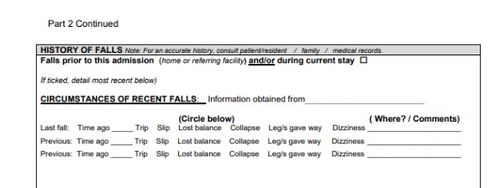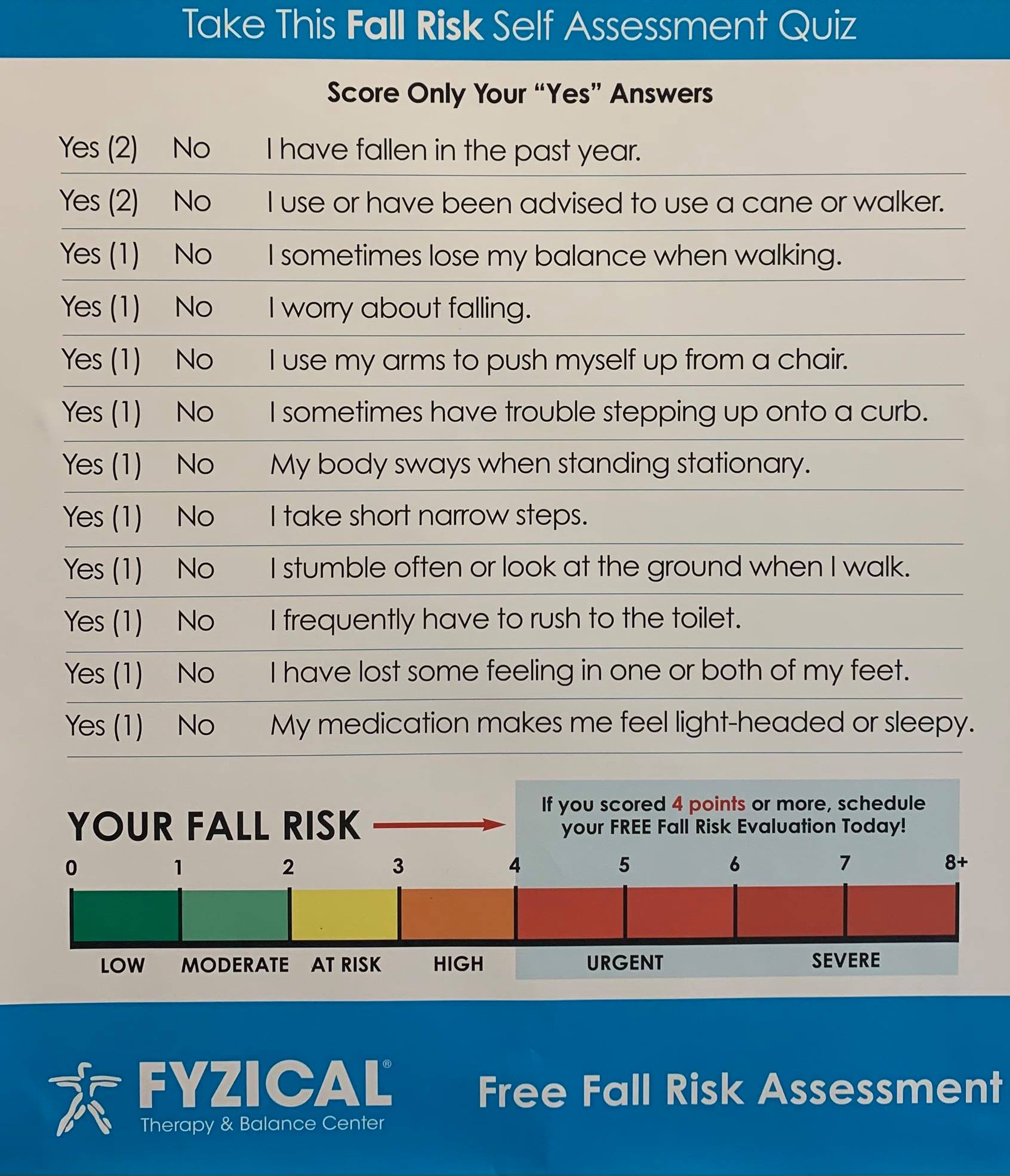The smart Trick of Dementia Fall Risk That Nobody is Discussing
The smart Trick of Dementia Fall Risk That Nobody is Discussing
Blog Article
All About Dementia Fall Risk
Table of ContentsNot known Factual Statements About Dementia Fall Risk About Dementia Fall RiskDementia Fall Risk Can Be Fun For AnyoneGetting The Dementia Fall Risk To Work5 Easy Facts About Dementia Fall Risk Explained
You may be anxious due to the fact that you've had a fall before or since you've noticed you're starting to feel unstable on your feet. You may have discovered changes to your health, or just seem like you're reducing a little. Whatever the factor, it isn't uncommon to end up being cautious and lose self-confidence, and this can quit you doing the important things you made use of to do and make you really feel more separated.If you've had a fall or you've begun to feel unsteady, inform your doctor also if you feel fine otherwise. Your medical professional can check your equilibrium and the way you stroll to see if enhancements can be made. They may be able to refer you for a drops danger analysis or to the drops prevention service.
This information can be gotten through meetings with the person, their caretakers, and a testimonial of their clinical documents. Begin by asking the specific about their history of falls, consisting of the frequency and scenarios of any kind of current drops. Dementia Fall Risk. Inquire concerning any kind of movement problems they may experience, such as unsteady or problem walking
Conduct a thorough testimonial of the individual's medicines, paying certain interest to those recognized to increase the danger of falls, such as sedatives or medications that reduced blood pressure. Determine if they are taking several medicines or if there have actually been current modifications in their medicine regimen. Evaluate the person's home environment for possible dangers that could enhance the danger of drops, such as poor lighting, loosened rugs, or absence of grab bars in the bathroom.
Some Known Facts About Dementia Fall Risk.
Guide the person via the loss threat assessment form, describing each question and tape-recording their actions properly. Ensure that the private comprehends the objective of the analysis and really feels comfortable giving sincere responses. Determine the total threat rating based upon the responses given in the evaluation kind. Identify the individual's threat category (low, medium, or high) based on the overall score and the presence of automated risky status aspects.
This plan may consist of workout programs to boost strength and equilibrium, medicine modifications, home alterations, and referrals to various other professionals as required. Frequently monitor the person's development and reassess their threat of drops as needed. Customize the care plan based on changes in their wellness condition or home environment. Give recurring education and assistance to promote safety and lower the threat of drops in their daily living activities.
Several research studies have actually shown that physical therapy can aid to lower the threat of dropping in grownups ages 65 and older. In a new study (that looked at drops risk in women ages 80 and older), researchers determined the economic impact of picking physical treatment to avoid drops, and they discovered that doing so conserves $2,144, consisting of all the concealed costs of your time, pain, missed life events, and the bucks spent for solutions.
Rumored Buzz on Dementia Fall Risk
Examining your heart rate and blood stress dimensions at rest and while you turn (from resting or existing to standing). A basic test of your thinking (cognitive) capabilities. Examining your balance, strength, and walking capacity. An easy vision examination. Analyzing your feet and shoes. A home safety and security evaluation. Based upon the evaluation results, your physical therapist will certainly develop a strategy that is customized to your certain needs.
Older grownups that have difficulty walking and chatting at the exact resource same time are at a greater risk of falling. Dementia Fall Risk. To aid raise your safety during everyday tasks, your physiotherapist might create a training program that will certainly test you to keep standing and strolling while you do an additional task. Examples consist of walking or standing while counting in reverse, having a discussion, or lugging a bag of grocery stores
Your physiotherapist also can determine which tasks you need to prevent to stay secure. Community-based falls prevention programs help people to: Reduce their fear of dropping. Establish objectives for raising their physical activity. Make their homes more secure. Work out much more to enhance their strength and balance. These programs commonly are led by volunteer trains.
A Biased View of Dementia Fall Risk

Measles, or rubeola, is an extremely transmittable, acute viral transmittable disease brought on by the measles virus. Some individuals consider measles as just a breakout and fever that gets rid of up in a couple of days; however, measles Your Domain Name can trigger severe wellness issues, specifically in kids more youthful than 5-years-old. The most effective security versus measles is the measles, mumps, and rubella (MMR) vaccination.
Loss are a typical reason of injury amongst older grownups.
All About Dementia Fall Risk

She has a medical history of seizure disorder and hypertension. She is obtaining an IV mixture and taking Gabapentin and Lasix. She has no history of falls, her stride is constant, and she voids without issues. The previous nurse states that she calls for go to website support to the restroom when she needs to go.
Instances of usual loss interventions/measures consist of: Ensuring a patient's crucial items are within reach. Putting the client's bed rails up with the alarm on. Helping a client while they're standing up from bed. Beyond recognizing exactly how to make use of the Johns Hopkins Fall Threat Assessment Tool, it's crucial that facilities incorporate its use right into a much more comprehensive loss avoidance plan.
Report this page